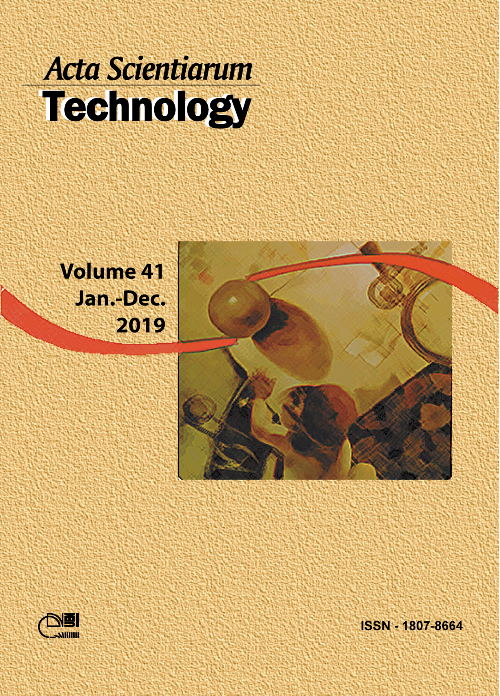Analysis of carbon monoxide production in methanol steam reforming reactor for generating hydrogen
DOI:
https://doi.org/10.4025/actascitechnol.v41i1.39926Palavras-chave:
steam reforming, methanol, hydrogen, fuel cells, renewable energy.Resumo
Seeking renewable energy sources has been a very important aspect in the development of human society, with many authors regarding hydrogen as a rather promising energy source. There are several forms of obtaining hydrogen, including steam reforming of hydrocarbons, alcohols, and ethers. Some characteristics of methanol, such as processing at mild temperatures from 250 to 350oC under atmospheric pressure and production from biomass - no competition for food production - have distinguished it from other alcohols for steam reforming. The great disadvantage of this technology when applied in proton exchange membrane (PEM) fuel cells is that the process of methanol steam reforming involves not only hydrogen and carbon dioxide, but also the production of a small amount of carbon monoxide, which is sufficient to affect the functionality of the fuel cells. This work presents the characterization of the catalyst HiFUEL R120 and shows how water/methanol molar ratio in the feed stream of an integral methanol steam reforming reactor influenced the conversion and the hydrogen selectivity in relation to carbon monoxide. This made it possible to identify the best operational conditions for lowering carbon monoxide content in the reactor effluent, avoiding the use of a CO purification unit.
Downloads
Downloads
Publicado
Como Citar
Edição
Seção
Licença
DECLARAÇíO DE ORIGINALIDADE E DIREITOS AUTORAIS
Declaro que o presente artigo é original, não tendo sido submetido í publicação em qualquer outro periódico nacional ou internacional, quer seja em parte ou em sua totalidade.
Os direitos autorais pertencem exclusivamente aos autores. Os direitos de licenciamento utilizados pelo periódico é a licença Creative Commons Attribution 4.0 (CC BY 4.0): são permitidos o compartilhamento (cópia e distribuição do material em qualqer meio ou formato) e adaptação (remix, transformação e criação de material a partir do conteúdo assim licenciado para quaisquer fins, inclusive comerciais.
Recomenda-se a leitura desse link para maiores informações sobre o tema: fornecimento de créditos e referências de forma correta, entre outros detalhes cruciais para uso adequado do material licenciado.



















